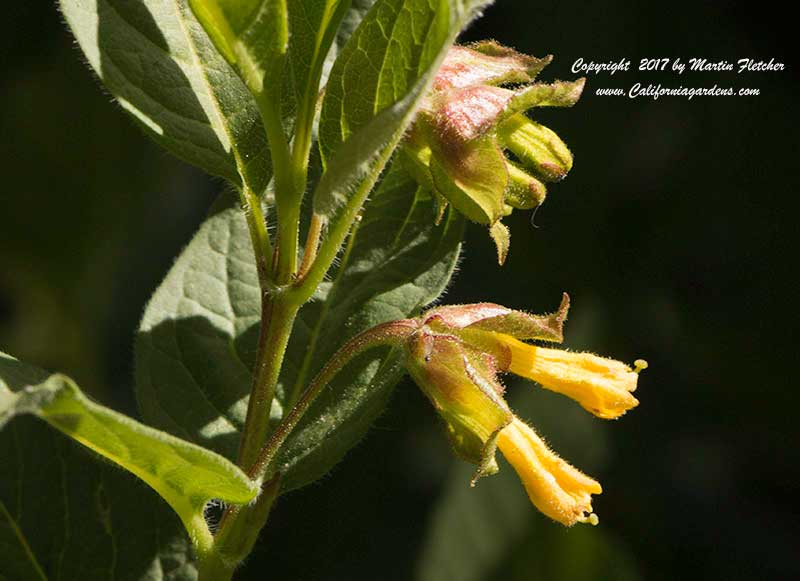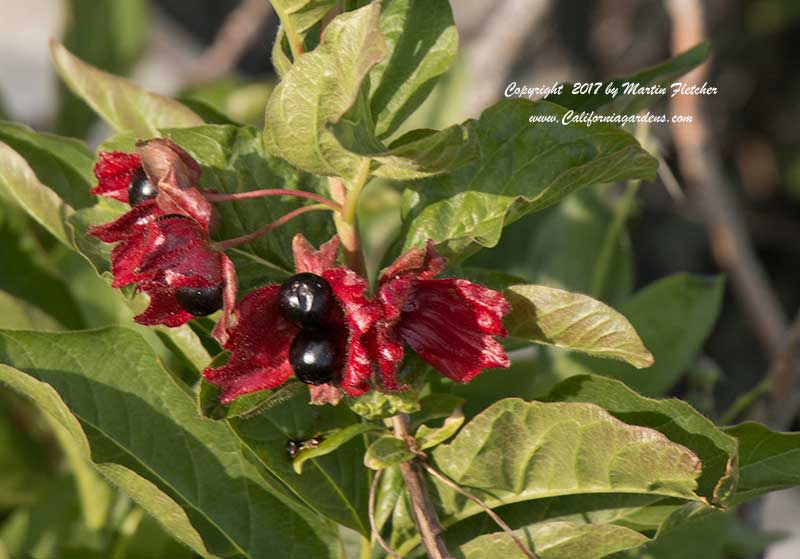Lonicera involucrata ~ Twinberry
Lonicera involucrata is native to the mountainous west, from the Rockies to the coast and Alaska to Mexico. Twinberry grows in forest margins and meadows and on streambanks. Lonicera involucrata blooms from late Spring into Summer. The though purportedly edible the berries are bitter and were used for dye, the plants were also used medicinally. The foliage turns red as Fall comes on. There are two varieties in California both have made it into the trade. One from the coast is Lonicera involucrata ledebourii with yellow-orange flowers and Lonicera involucrata involucrata with yellow flowers is from the Sierras. Lonicera involucrata grows 6-8 feet tall and wide. Plants are fairly drought tolerant put to the test though they naturally occur in moister environments. Lonicera involucrata with its fragrant flowers is a hummingbird favorite. Twinberry deserves a spot in the Butterfly Garden as well, attracting the Gulf Frittilary, Giant Swallowtail, and Western Tiger Swallowtail for its nectar.

Yellow flowers of Lonicera involucrata var. involucrata - Twinberry. High resolution photos are part of our garden image collection.

Yellow Orange flowers of Lonicera involucrata var. ledebourii - Twinberry. High resolution photos are part of our garden image collection.

Red bracts and dark fruit of Lonicera involucrata - Twinberry. High resolution photos are part of our garden image collection.
Plants from the genus Lonicera featured on this site:
Lonicera ciliosa * Orange Honeysuckle, Western Trumpet Honeysuckle
Lonicera involucrata * Twinberry
Lonicera japonica * Japanese Honeysuckle
Lonicera japonica purpurea * Purple Leaf Japanese Honeysuckle
Lonicera subspicata denudata * Chaparral Honeysuckle
